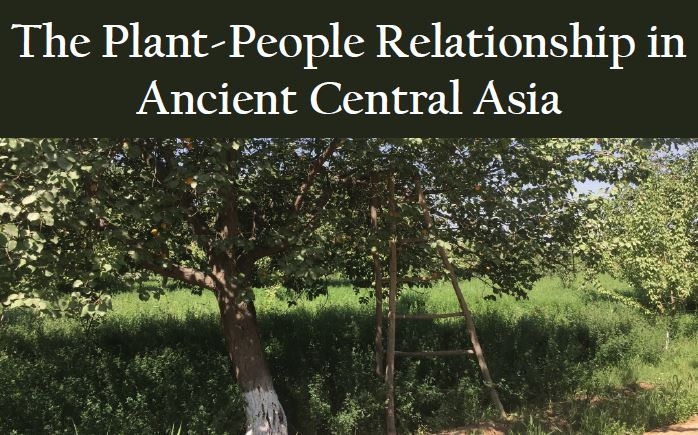Past Events
Interested in Cotsen events? Sign up for our mailing list.Egypt in Africa
Professional presentations by UCLA undergraduate students
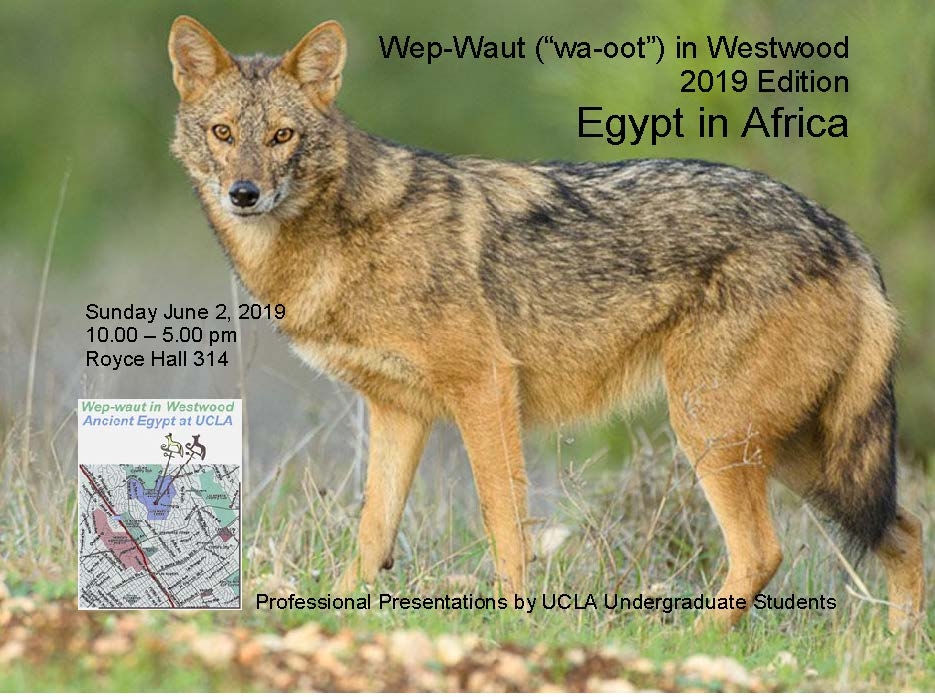
Contact Willeke Wendrich
Phone
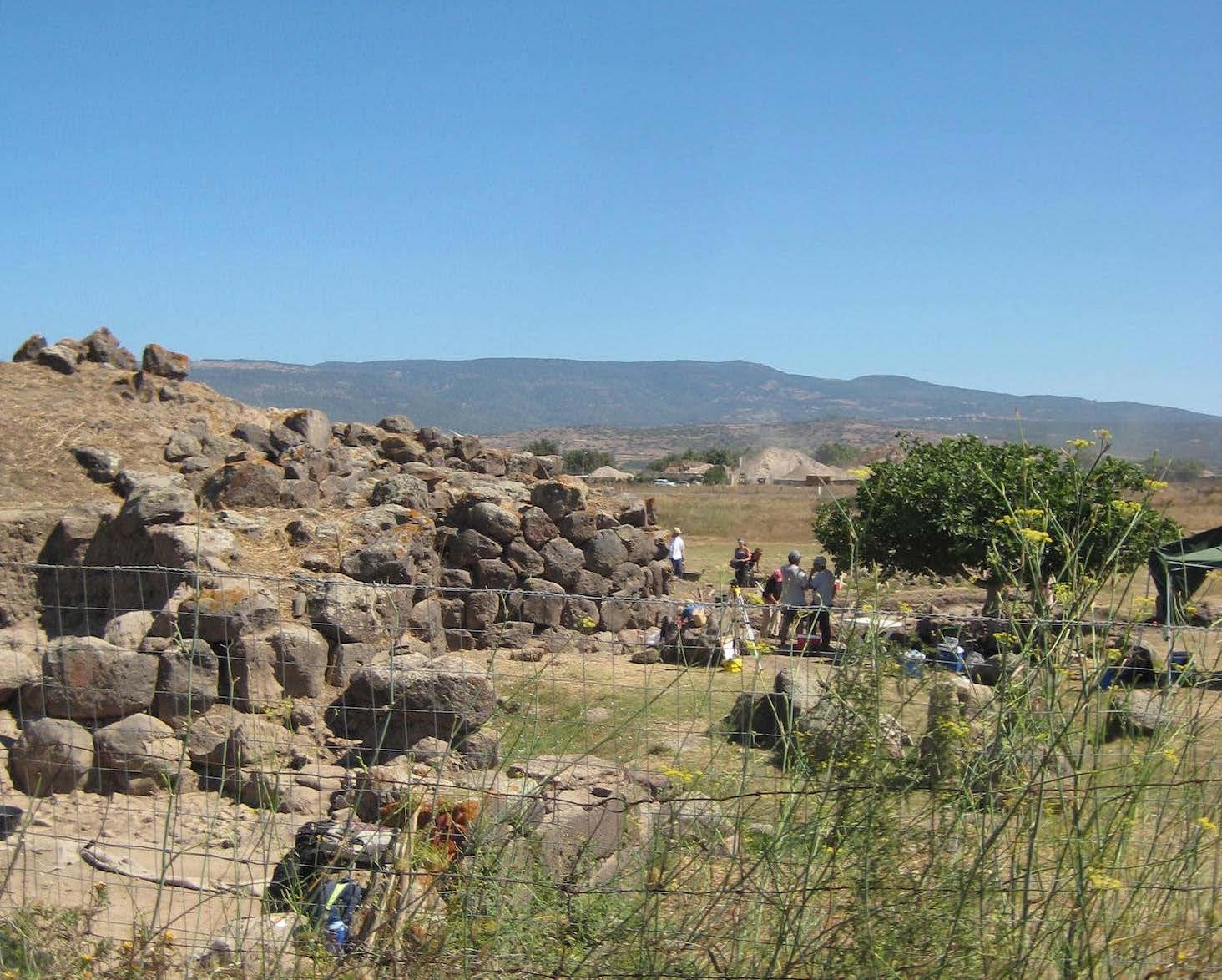
Speaker:
Dr. Linda Reynard
Research Associate
Department of Human and Evolutionary Biology, Harvard University
Abstract:
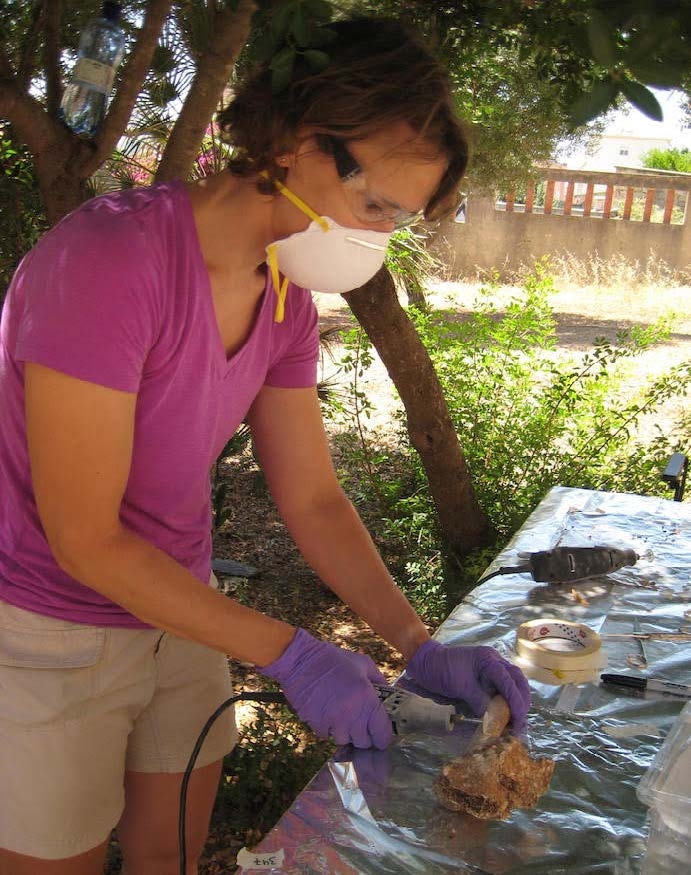
Over the last 20-30 years, the analysis of stable isotope ratios from bones and teeth has contributed tremendously to the understanding of paleodiets, paleoenvironments, and migration. However, hydrogen and oxygen isotope ratios in collagen are understudied compared to the well-known use of carbon, nitrogen, and strontium isotope ratios. Given that hydrogen and oxygen show geospatial patterns of isotopic variation as tracers of the global hydrological cycle, further investigation of the utility of these tracers for archaeological studies is warranted. I will outline results of our study using the Mediterranean basin as a test case, involving Late Bronze and Iron Age humans and fauna from five sites spanning 3500 km east-west across the Mediterranean basin. This rich data set shows highly variable faunal isotope ratios; in contrast, humans have tight population mean isotopic ratios. Diet type, digestive physiology, and human manipulations of foodstuffs likely play a role in causing these patterns. In addition,environmental variability between the sites is noted in the collagen isotope ratios. These results demonstrate that hydrogen and oxygen isotope ratios in bone are valuable tracers, but equally that much further work is needed to elucidate the mechanisms responsible for the patterns seen.
Bio:
Dr. Reynard is a research associate and lecturer at the Department of Human and Evolutionary Biology,
Harvard University. Her research includes the application of state of the art of Hydrogen and Oxygen
isotope geochemistry for paleodiet and paleoenvironment research in archaeology. Dr. Reynard finished her D.Phil, and her M.Sc. in archaeological science at University of Oxford.
Contact Sumiji Takahashi
Email sutakahashi@ioa.ucla.edu
Phone 310-825-4169
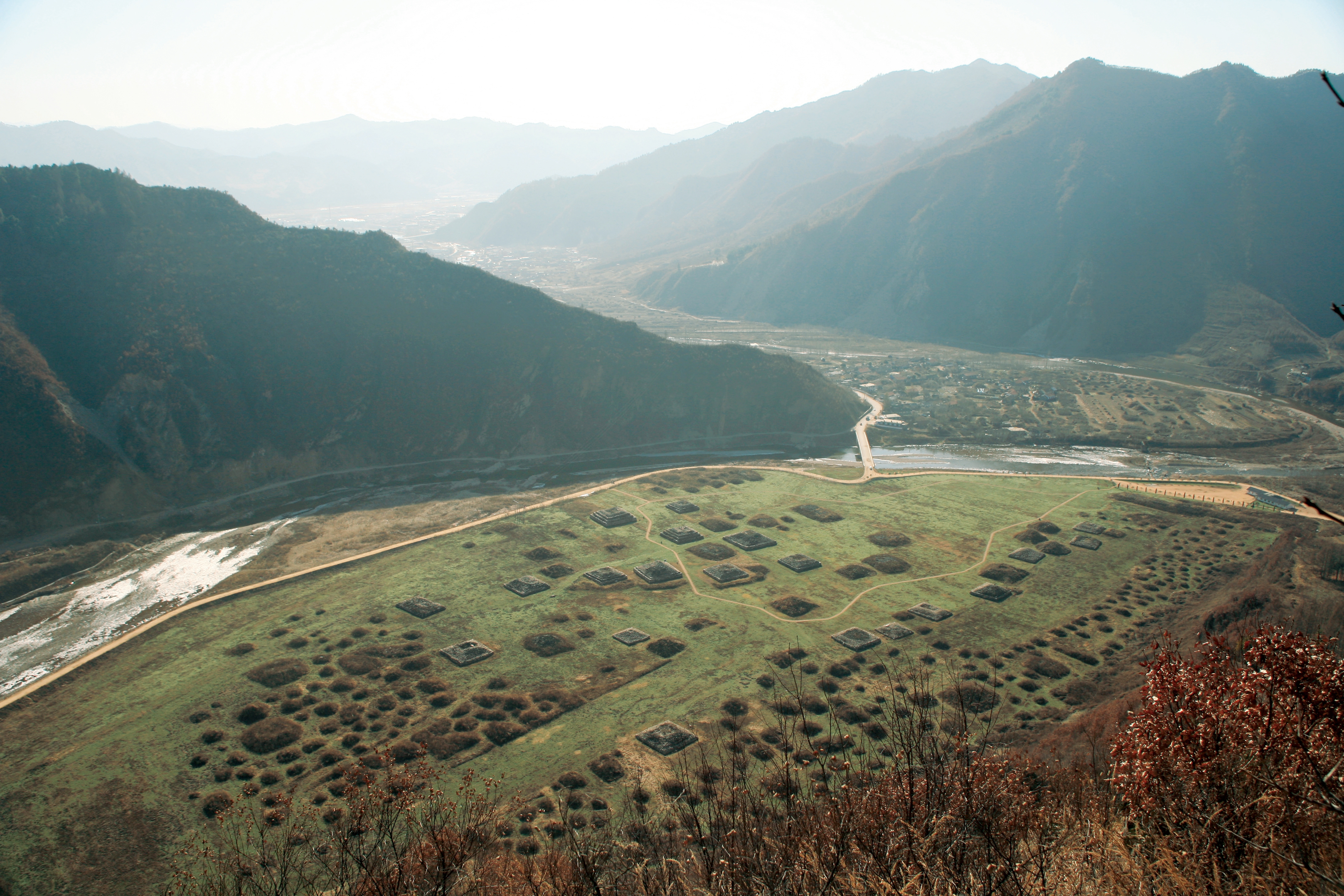
Speaker:
Dr. Sungjoo Lee
Kyungpook National University
Contact Sumiji Takahashi
Email sutakahashi@ioa.ucla.edu
Phone 310-825-4169
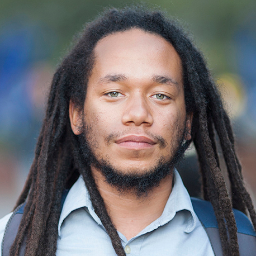
Speaker:
Dr. Justin Dunnavant
UC President’s Postdoctoral Fellow
University of California, Santa Cruz
Bio:
Dr. Justin Dunnavant is a UC President’s Postdoctoral Fellow
at the University of California, Santa Cruz. He holds a BA in
History and Anthropology from Howard University and an
MA and Ph.D. from the University of Florida. While his
former research interrogated the history and representation of minority groups in southern Ethiopia, his current work in the US Virgin Islands investigates the relationship between ecology and enslavement in the former Danish West Indies.Justin has conducted archaeological research in US VirginIslands, Belize, Jamaica, Ethiopia, Tanzania, Mozambique, andThe Gambia.
Abstract:
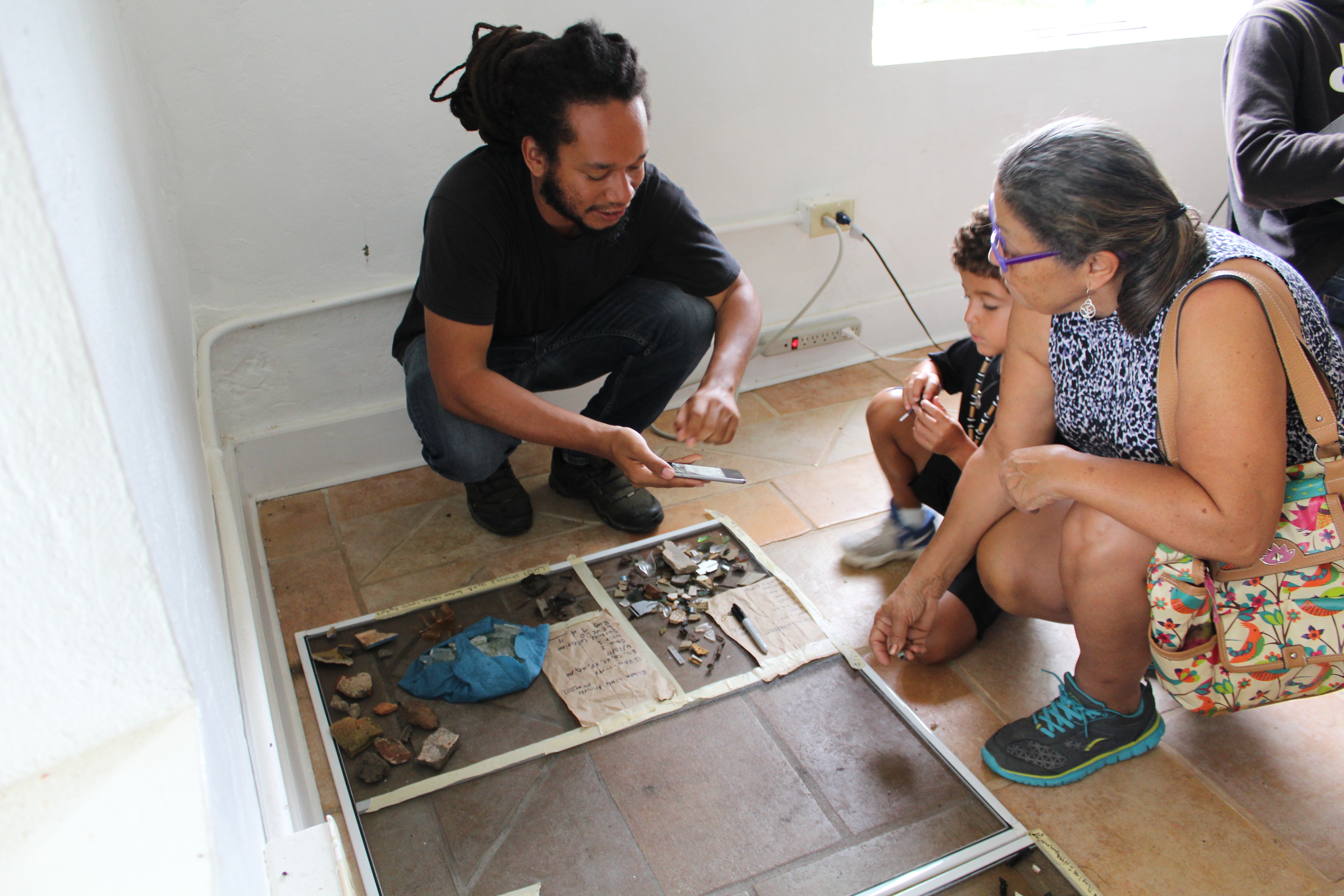
The transatlantic slave trade era – marked by chattel slavery, racial capitalism, and exploitative plantation economies – radically transformed societies and environments in the Americas. In this talk, I attempt to craft a historical ecology of the African Diaspora through an analysis of slavery in the Danish West Indies. Drawing from an array of archaeological, historical and environmental data, I argue that the development of plantation slavery elicited lasting ecological changes as colonial planters developed exploitative monocrop agricultural systems and enslaved Africans made a life in the Caribbean. Theoretically, I use a Black Geographic lens to interrogate the relationship between African diasporic communities and their Atlantic environments. Finally, I posit the need to engage questions of sustainability as a form of redress in contemporary archaeological praxis.
Contact Sumiji Takahashi
Email sutakahashi@ioa.ucla.edu
Phone 310-825-4169

Speaker:
Roxanne Radpour
Ph.D. candidate, UCLA
Contact Sumiji Takahashi
Email sutakahashi@ioa.ucla.edu
Phone 310-825-4169
The Annual Cotsen Institute of Archaeology Open House will take place on
May 18, 2019 from 11:30 to 4:00pm
with the theme
Technology: Ancient and Modern
Explore the breadth of ancient technologies through a mosaic of talks by Drs. John K. Papadopoulos, Gregson Schachner, Monica L. Smith, and Willeke Wendrich. Then visit the labs within the Cotsen to learn more and see these technologies up close!
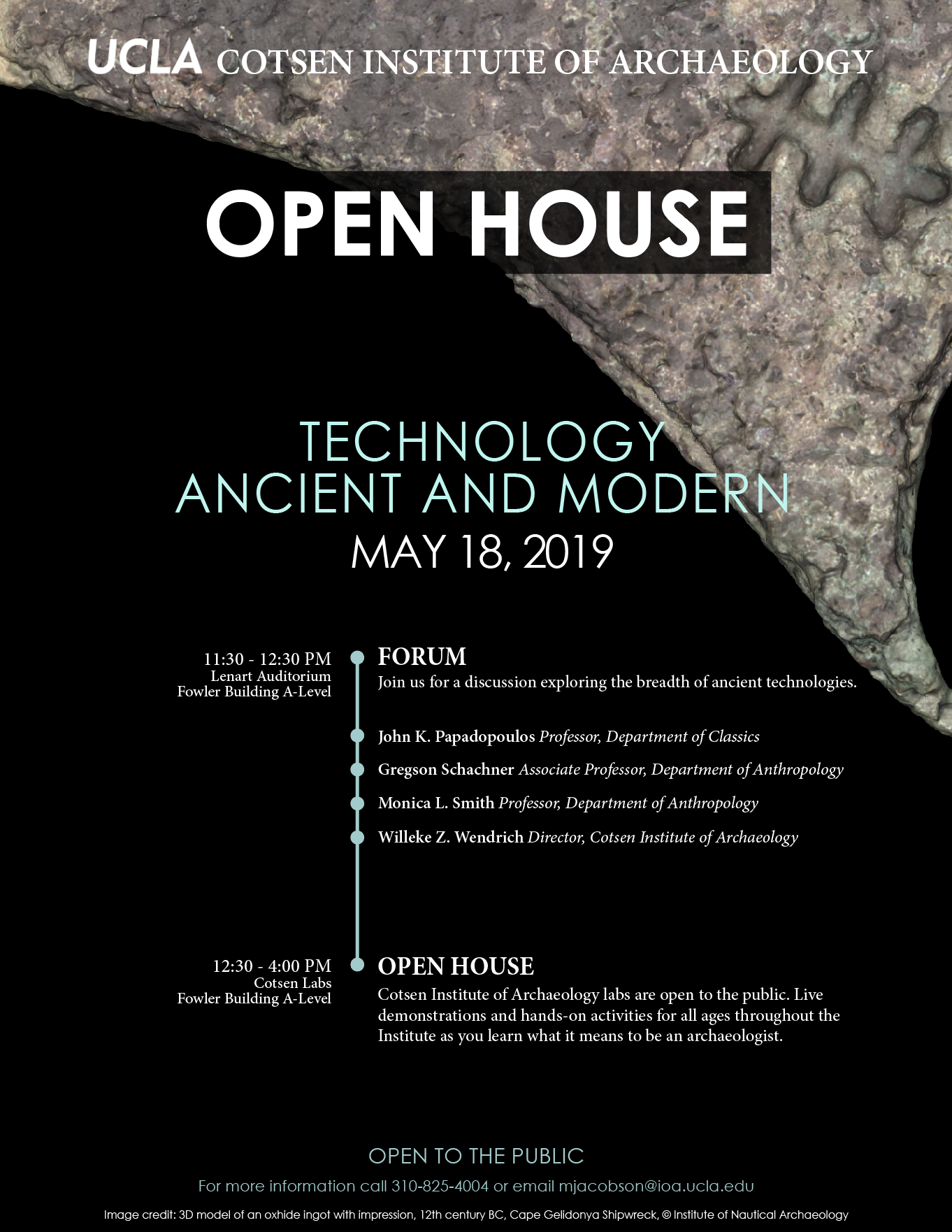
Contact Michelle Jacobson
Email mjacobson@ioa.ucla.edu
Phone
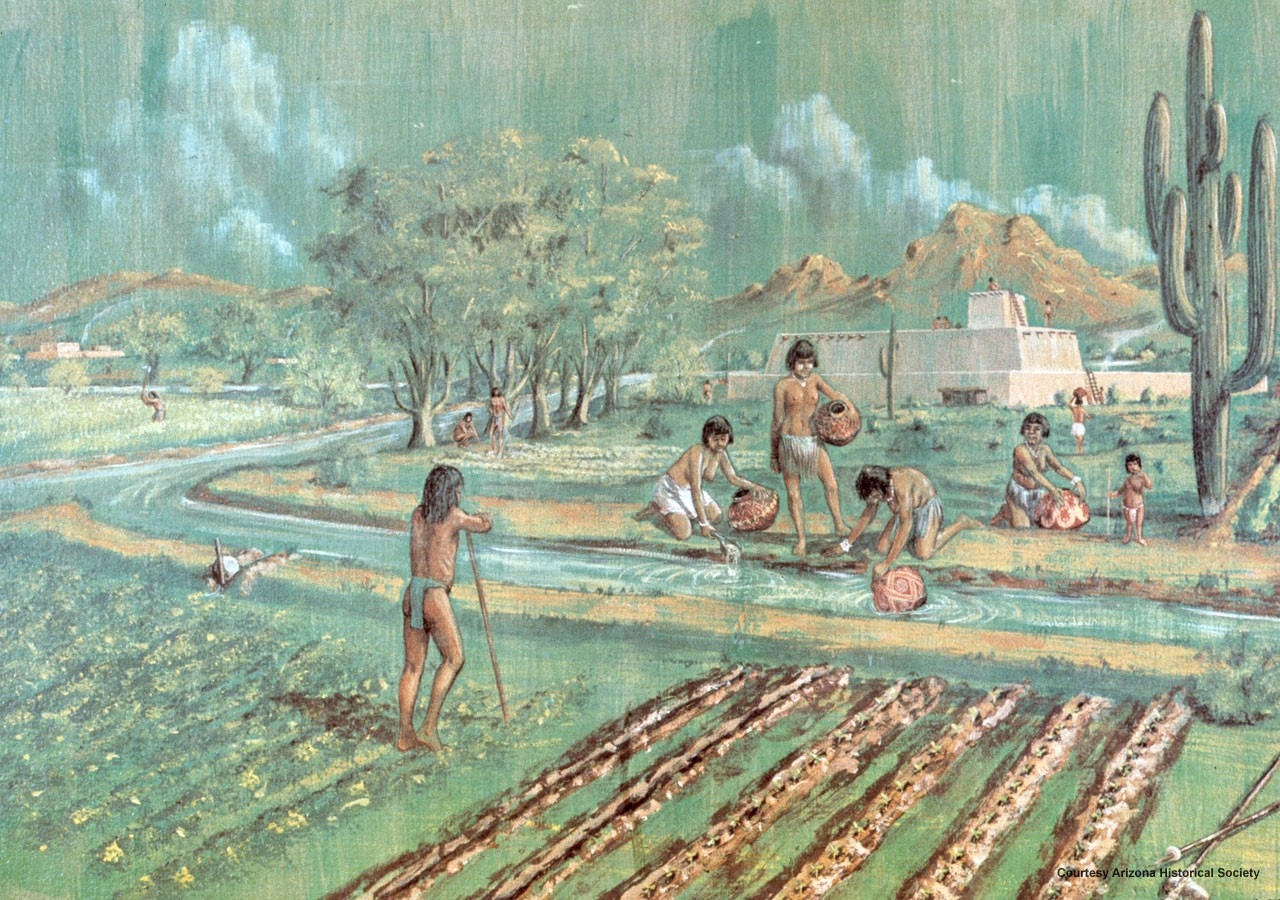
Speaker:
Christine A. Hastorf
University of California, Berkeley
Abstract:
Plants have been the most common non-human set of species that people have engaged with over human existence. While most people speak of domesticating plants, they too have domesticated us. They have formed intimate relations with us, having convinced our ancestors to settle down and care for them. At times they have become kin, moving in with us and sustaining us, like a good grandmother. How can we see these intimate relationships with plants in the past, given that they are often scarce in archaeological sites? By thinking about plants in more social ways we can begin to get closer to people’s choices, values and engagements with plants as we accept that this has been an intimate relationship since the before the palaeolithic times.
Bio:
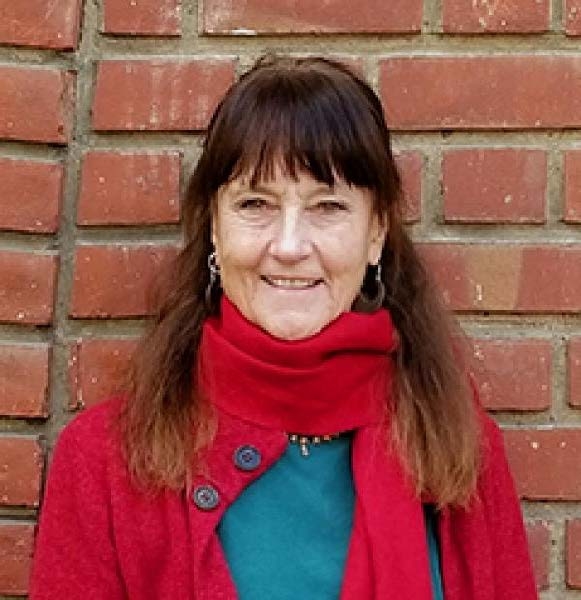
Christine Hastorf is a professor of Anthropology at the University of California Berkeley. She is a leading scholar in the field of paleoethnobotany. She is currently the director of the McCown UC Berkeley archaeobotany laboratory and the Archaeology Research Facility at UC. Berkeley. As archaeologist, she led archaeological work in the Andean region of South America since 1980 with focus on plantpeople relationship. Her published books include Agriculture and the Onset of political inequality before the Inka; Empire and domestic economy; Heads of State: Icons, Power, and Politics in the Ancient and Modern Andes. Her most recent book is the Social Archaeology of Food:Thinking of food in Prehistory.
Contact Sumiji Takahashi
Email sutakahashi@ioa.ucla.edu
Phone 310-825-4169
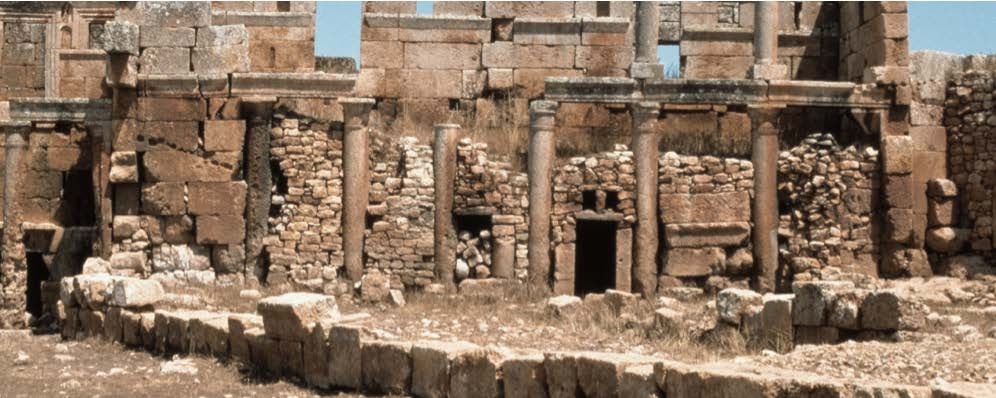
Speaker:
Dr. Ann Marie Yasin
Associate Professor of Art History and Classics
USC
Contact Sumiji Takahashi
Email sutakahashi@ioa.ucla.edu
Phone 310-825-4169
Speaker and Bio:
Elizabeth Brite is a clinical assistant professor in the Honors College, Purdue University. She is also co-director of the Khorezm Ancient Agriculture Project in Karakalpakstan, Uzbekistan. Dr. Brite received her Ph.D. in Anthropology from UCLA in 2011.
Abstract:
This talk explores the recent proliferation of studies on the plant-people relationship in ancient Central Asia. Over the last 25 years, signifi cant data sets of ancient plant remains and other dietary indicators have emerged from major and minor archaeological sites across the region. Many of the studies that have produced these data pursue a wide-ranging picture of the transmission of domesticated plants across cultures and emphasize the role of the Silk Road in shaping food globalization in prehistory. Contrasting these are other studies that examine the local, embedded, and indigenous facets of ancient plant usage and domestication within Central Asia itself. Both perspectives capture fascinating aspects of ancient human-environment dynamics in Central Asia using novel approaches. They also mirror contemporary discourse about globalization and its implications for human societies. This talk will explore these bodies of emerging scholarship and present information on new research in Central Asia aimed at addressing some of the recent trends.
Contact Sumiji Takahashi
Email sutakahashi@ioa.ucla.edu
Phone 310-825-4169
Speaker:
Dr. Stella Nair
Associate Professor
UCLA, Dept of Art History
Contact Sumiji Takahashi
Email sutakahashi@ioa.ucla.edu
Phone 310-825-4169
- ‹ previous
- 26 of 49
- next ›



